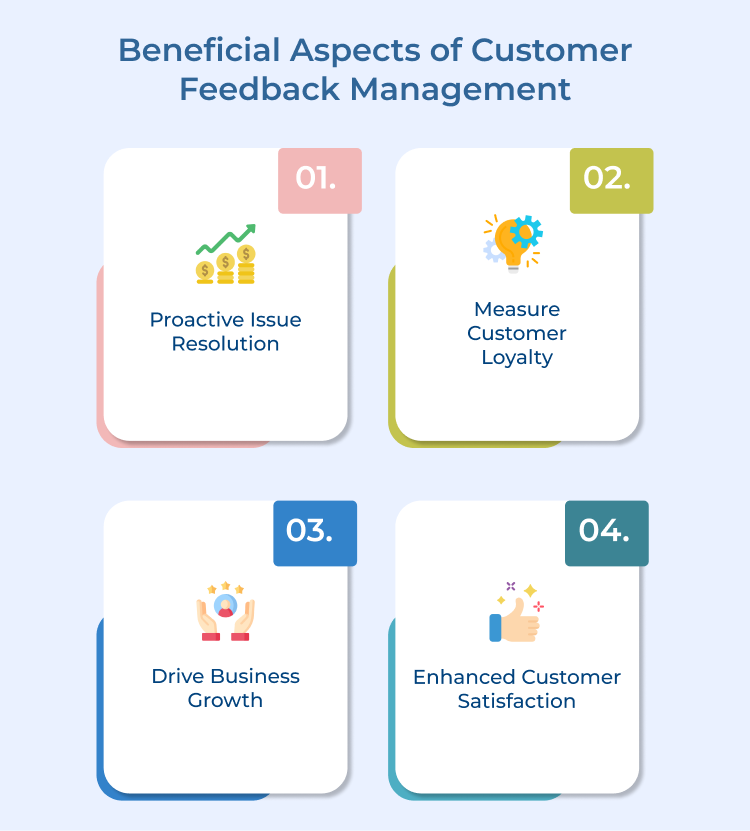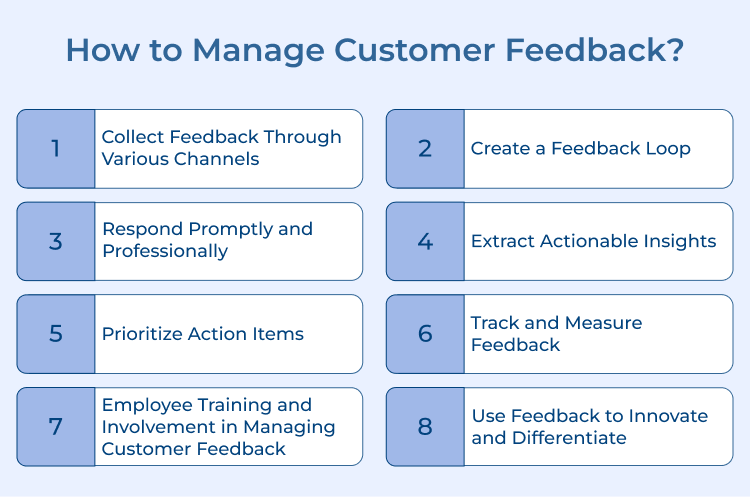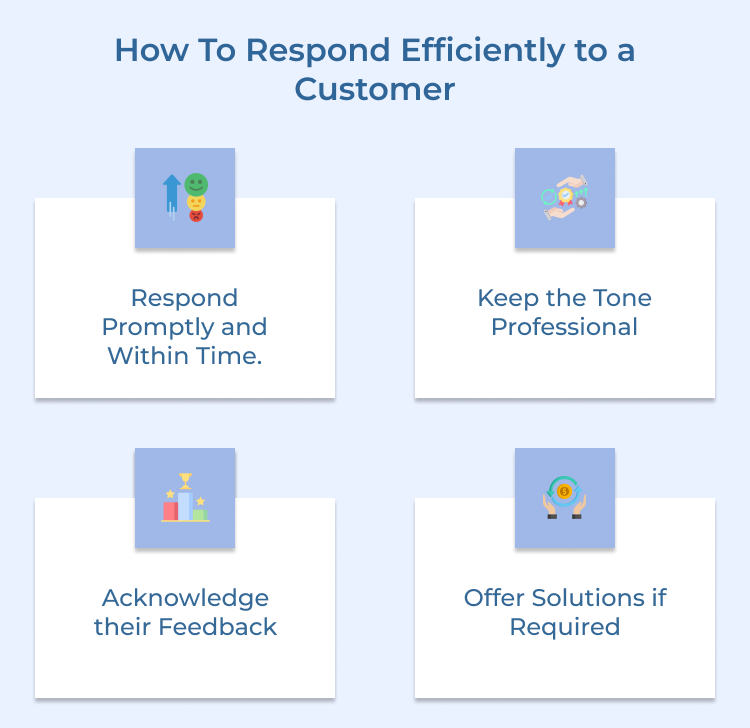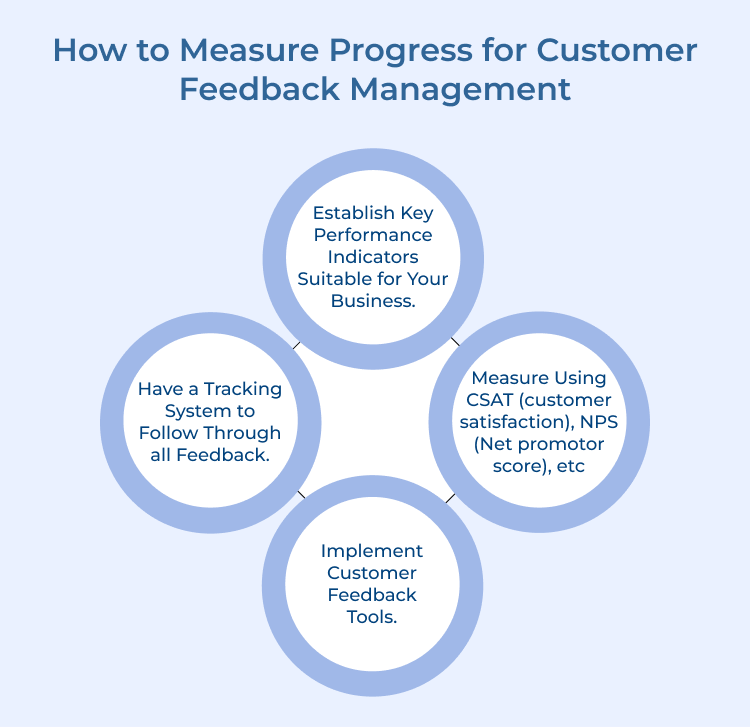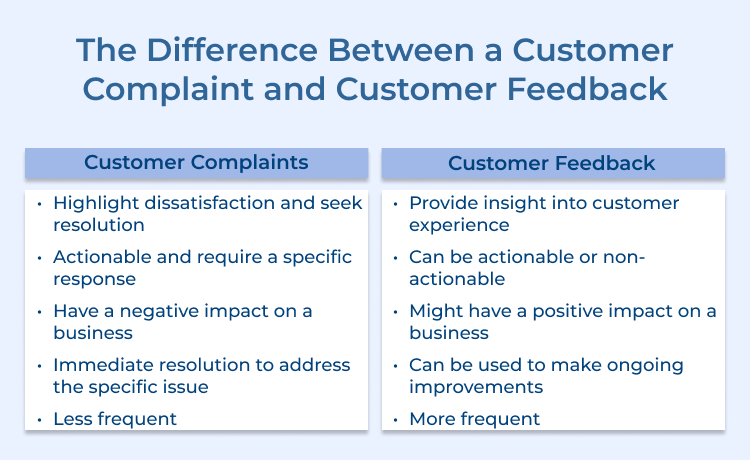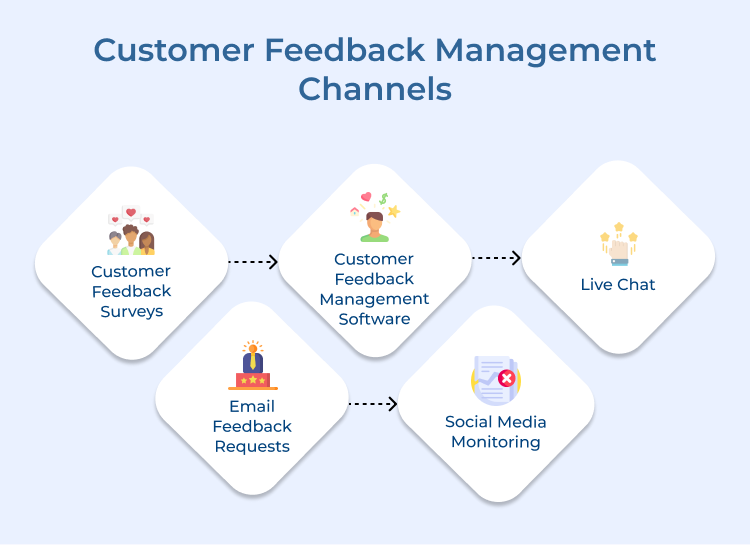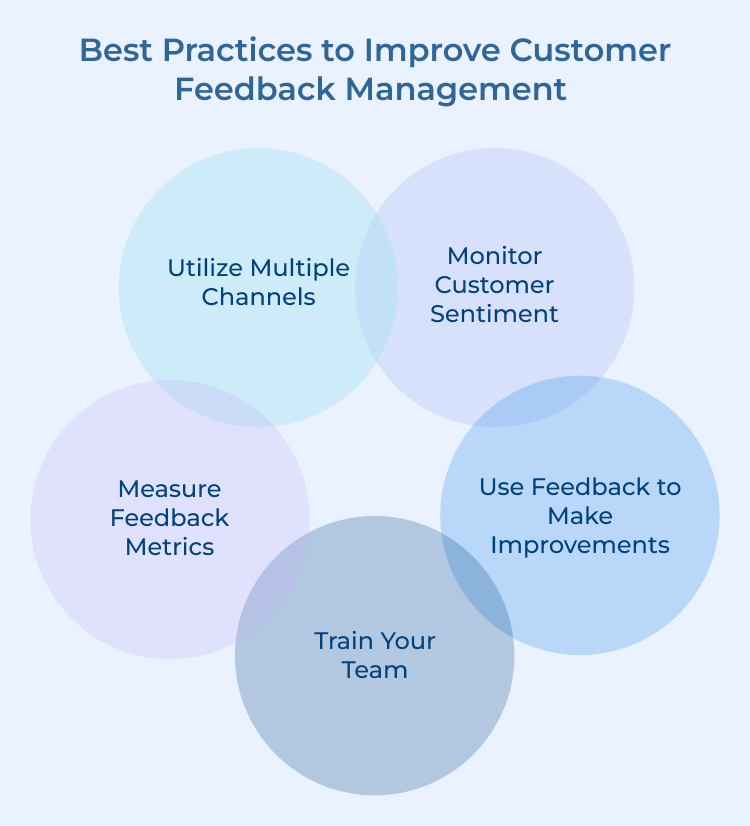- Utilize multiple channels: Provide multiple channels for feedback so it is easy for your customers. Different options like surveys, social media mentions, email or even in-person feedback forms will do wonders.
- Monitor customer sentiment: Keep track of customer sentiment over time to see if there are any changes in customer satisfaction levels. Use this information to adjust your strategies and improve customer experience.
- Use feedback to make improvements: Use customer feedback to identify areas for improvement and implement changes to address customer concerns. Let the customers know about your upgrades because of their feedback – they’ll feel valued.
- Train your team: Provide training to your team on how to effectively manage customer feedback. Teach them how to respond empathetically while also allowing them to take ownership. A collaborative environment makes everyone happy, isn’t it?
- Measure feedback metrics: Track key feedback metrics such as customer satisfaction scores, net promoter scores and response rates. Monitor these metrics regularly to gauge the effectiveness of your feedback management efforts and identify areas for improvement.
4 Examples of Customer Feedback Management
Is it even worth it, if there is no innovation to the brand? Customers come with some efficient feedback that sometimes even the greatest of minds in the company cannot find.
Zocdoc
Zocdoc, an online healthcare booking platform, has a comprehensive customer feedback management strategy in place. They collect feedback from patients after their appointments to improve the booking process and the overall patient experience. Zocdoc also uses data analytics to identify trends in customer feedback and make data-driven decisions to enhance their service.
Uber
Uber is a prime example of a brand that has excelled in customer feedback management. This ridesharing company has a dedicated team that collects and analyzes feedback from customers through various channels, such as the app, surveys, social media, etc. The impact of Uber’s focus on customer feedback management has been significant, leading to increased customer satisfaction and loyalty. Other businesses can implement a similar approach by actively seeking feedback from customers, analyzing trends and patterns, while taking action to address any issues or concerns raised.
Salesforce
Salesforce, a leading customer relationship management software company, has a robust customer feedback management system in place. They use customer surveys, feedback forms and customer success managers to gather feedback from their users. Salesforce continuously updates their software based on customer feedback to ensure that it meets the evolving needs of their users.
Amazon Business
Amazon Business, the wholesale platform of Amazon, has a customer feedback system that allows business customers to rate and review products as well as sellers. This feedback system helps other business customers make informed purchasing decisions. Amazon Business also uses customer feedback to identify popular products and improve the overall shopping experience for their users.
Leverage Customer Feedback Management to Provide Excellent Customer Service
Leveraging customer feedback management is crucial for providing excellent customer service. By actively seeking while listening to feedback from your customers, you can identify areas for improvement, address any concerns, ultimately enhance their overall experience. Implementing a structured feedback management system can help build stronger relationships with customers, increase loyalty and drive business growth.
Remember, customer feedback is a valuable source of information that can guide your strategies and lead to greater success in meeting while also exceeding customer expectations. So, prioritize customer feedback management in your approach to delivering exceptional service.
